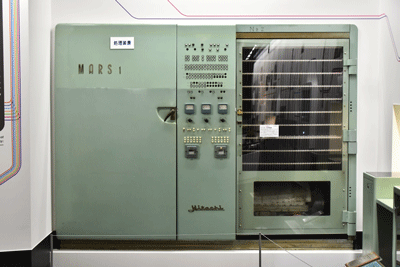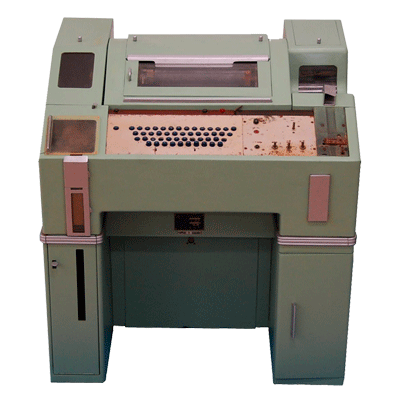

- Home >
- Artifacts of IP Heritage >
- 2008 >
- MARS-1
MARS-1



| Manufactured in | 1959 |
|---|---|
| Manufactured by | Hitachi, Ltd. |
| Owner | East Japan Railway Company |
| Location of historical materials | The Railway Museum, East Japan Railway Culture Foundation, 3-47 Onari-cho, Omiya-ku, Saitama-shi, Saitama 330-0852 Japan |
| Visitor information | Open to the public |
| Contact | The Railway Museum, East Japan ailway Culture Foundation
Tel.+81-48-651-0088 http://www.railway-museum.jp/ |
Japan National Railway (now called Japan Railway) seat reservation system MARS-1 (Magnetic-electronic Automatic Reservation System 1) was developed by Hosaka Mamoru et al of the National Railways Technical Research Institute and was manufactured by Hitachi in 1958. The central processing unit was installed at the computer room of Tokyo Station in 1959. This system started the seat reservation operation for the limited express trains running between Tokyo and Osaka in 1960. This is the first train seat reservation system in the world. At the beginning, it dealt with four limited express trains, 3,600 seats, for fifteen days. Reservation operation was run by setting terminals at nine stations such as Tokyo Station, Ueno Station and others in Tokyo area.
The central processing unit has a drum memory unit of 600,000 bits and two sets of arithmetic and control units, and adopted to verify the two sets of results. It also adopted a system to use a magnetic drum memory as delay line registers. This approach was effective to reduce the numbers of transistors to be used drastically and to keep the system reliable. As MARS-1 assured to be used for practical operation, Japan National Railway decided to introduce a seat reservation system for the trains for all over Japan. A succeeding system MARS-101 was developed in 1964. Midori-no-Madoguchi (Green Windows) were newly opened at major stations and seat reservation service was expanded to all over Japan.
